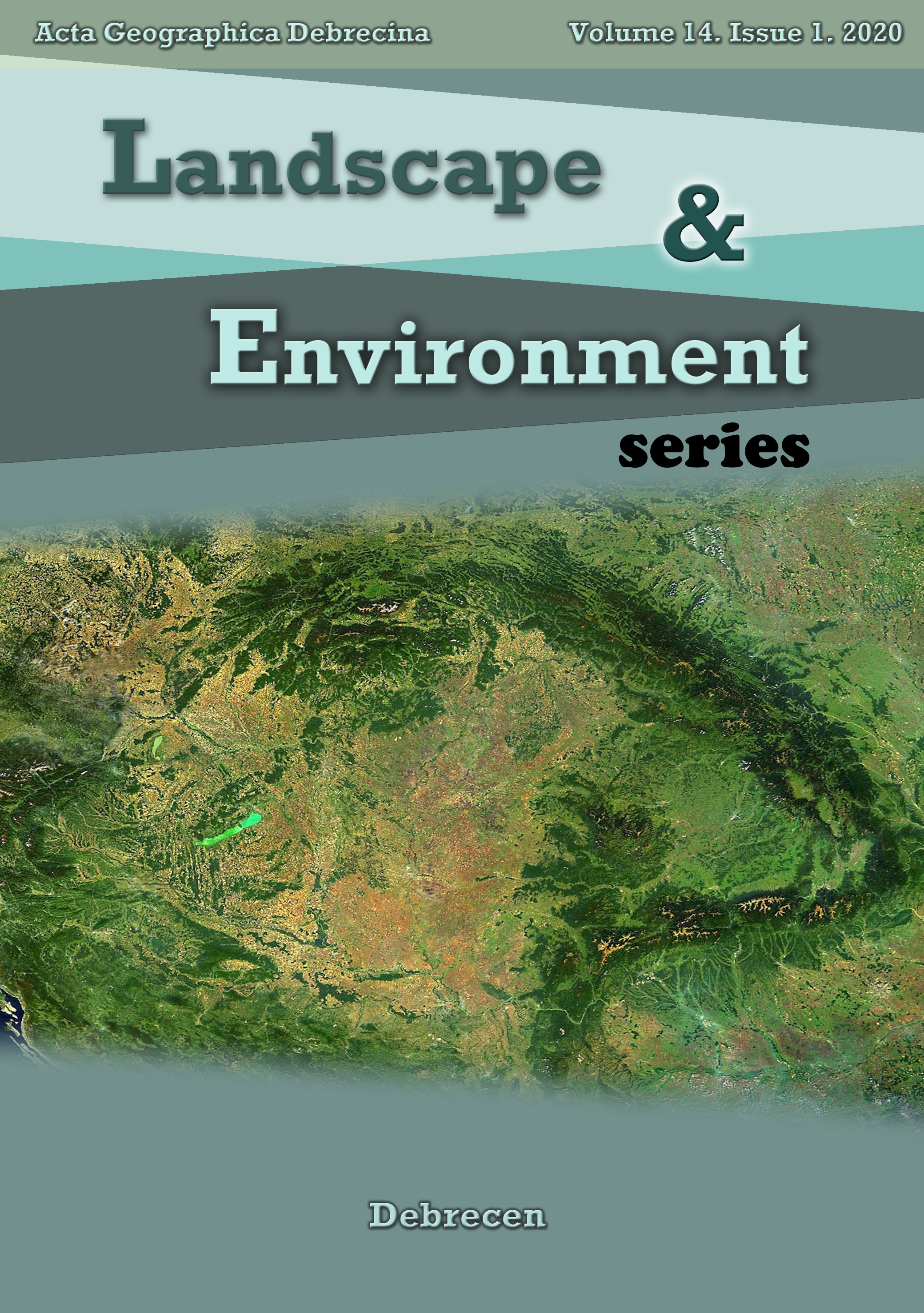Vol. 14 No. 1 (2020)
Z. Islam – A. A. Tewelemedhin – A. T. Berhe. Spatial Statistical Analysis of the relation in between population density and Human Modification of terrestrial lands at Tabia level in the Tigray Region of Ethiopia
R. Vass – D. Milosevic. Morphological grouping of fossil floodplain forms in the northeastern part of the Pannonian plain
##issue.tableOfContents##
Articles
-
Spatial Statistical Analysis of the relation in between population density and Human Modification of terrestrial lands at Tabia level in the Tigray Region of Ethiopia
1-9Views:264In this study first spatial pattern of the level of human modification of terrestrial lands and second its relation with population density was studied at Taiba level in the Tigray regional state of Ethiopia. For the level of human modification of terrestrial lands global Human Modification dataset (gHM) was used and for population density Gridded Population of the World, Version 4 (GPWv4.11) dataset was used. Both the data set were preprocessed before geostatistical analysis. To measure the distribution pattern Global Moran's I statistics, Cluster and Outlier Analysis (Anselin Local Morans I) statistics was used. To measure the relation between population density and human modification of terrestrial lands geographically weighted regression was used. In the case of first objective the resulting z-score of 50.50, confirm the tabias with high Human Modification of terrestrial lands are highly clustered. In case of second objective the results shows 214 Tabias containing high value and are surrounded by Tabias with high values (HH), 10 Tabias containing high value and is surrounded by Tabias with low values (HL). The relation between population density and human modification of terrestrial lands was found positive with R2= 0.506. This research will help the government and planners for proactive spatial planning to maintain biodiversity and ecosystem function before important environmental values are lost in tabias containing high value and is surrounded by Tabias with high values.
pdf484 -
Morphological grouping of fossil floodplain forms in the northeastern part of the Pannonian plain
21-33Views:117The Bereg Plain is located in the northeastern part of the Pannonian Plain, close to the Carpathian Mountains. Clarification of the evolution of its topography is essential for the development of the whole area. The former single alluvial cone has been fragmented, some parts of it subsiding and others rising. The displacements of the subsided parts of the area were dominated by erosion processes, as in the Bereg Plain. As a consequence, a significant part of the sand in the area has been degraded and only traces of it remain in the Bereg Plain. The existing sand patches have been identified and classified using DEM. In the area identified 10 floodplain islands not yet mentioned in the scientific literature. The investigation of the numerous islands – hitherto unknown and be-longing to different morphological types – enabled us a reconstruction of the surface development of the Bereg Plain that is more differentiated and precise than ever before. Based on their morphogenetic properties, these floodplain islands can be divided into three main types: (1) erosion islands, (2) point-bars, (3) coastal dunes. In the area, I could recognize no pattern or re-gularity in the position of the individual forms of any type. In many cases, the direction of the longitudinal trends is perpendicular to one another, which excludes their Aeolian origin. The sediment of the floodplain islands mainly consists of medium-, small- and fine-sized sand, but the settlement of loess-mantled and loess-like layers among the sandy sediment of certain forms can also be observed. The layer with 15 % lime content and 53–60 % loess fraction (0.05–0.01 mm) – found in the 110–50 cm high section of the erosion island called the Homok-tanya in Mátyus – can be considered a typical loess, based on the detailed parameters. Its formation in all probability took place at the same time and under similar conditions than that of the more than 2 m thick aeolian loess mantle found in the Nyírség area, some 10 km west from there, which had accumulated before the Bölling period. In case of an erosion island 2.5 km to the south and lying some 2 m lower, such a loess mantle cannot be found anymore, despite the fact that the sandy layers of the two sediment series are almost completely identical. The background of this phenomenon is the more active and frequent, mainly erosional fluvial processes – because of the lower position –, which eroded the loess mantle. The composition of the surface sediments is de-termined by the absolute altitude as well. The cover sediment of the lower-lying islands is identical to the finishing silt-clay deposits found at the alluvial parts of the Bereg Plain, whereas the surface of higher-lying forms that have not seen flood for ages, is covered by sand or loessy sand.
PDF90
